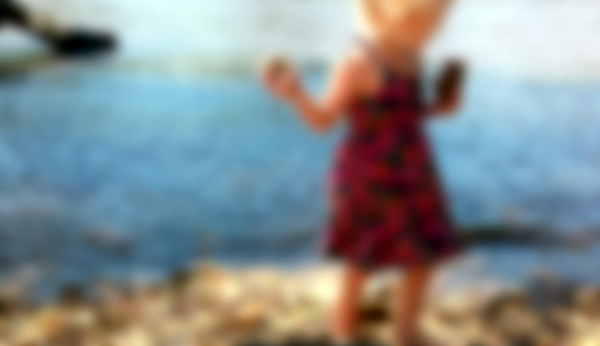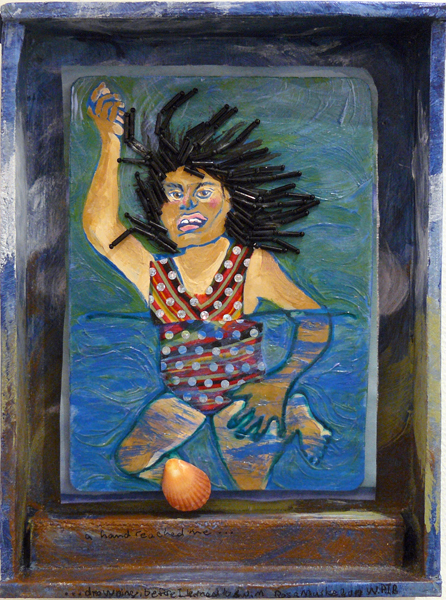Women and Water Rights II: Rivers of Regeneration
- October 27 to November 22, 2011 — Opening Reception: Thursday, October 27, 7:00 p.m.
 HANCOCK, MI – Women and Water Rights II: Rivers of Regeneration, a group exhibition, will be featured at the Finlandia University Gallery, located in the Finnish American Heritage Center, Hancock, October 27 to November 22, 2011.
HANCOCK, MI – Women and Water Rights II: Rivers of Regeneration, a group exhibition, will be featured at the Finlandia University Gallery, located in the Finnish American Heritage Center, Hancock, October 27 to November 22, 2011.
Included in the exhibit are works by Liz Dodson and James Brenner, Mayumi Amada, Cheryl Wilgren Clyne, Rosa Musket, Christine Flavin, Yueh-mei Cheng, Melissa Hronkin, Robert Grame, Phyllis Fredendall, and Denise Vandeville.
An opening reception for the artists will take place at the gallery Thursday, October 27, 7:00 to 8:30 p.m. The artists will speak at 7:15 p.m. The reception is free and open to the public. Refreshments will be served.
 Who has the right to bodies of water, in our state, our country, our world? What are the issues involved in making water available to us? How does gender affect the right to water?
Who has the right to bodies of water, in our state, our country, our world? What are the issues involved in making water available to us? How does gender affect the right to water?
Several years ago in Minnesota, a group of women began discussing these questions. Their inquiry blossomed into the 2010 juried exhibit and symposium “Women and Water Rights: Rivers of Regeneration.” The event was organized by the Women’s Caucus for Art, Minnesota Chapter, and held at the Katherine Nash Gallery on the University of Minnesota Campus.
“Women and Water Rights II: Rivers of Regeneration” will feature artwork by four artists who participated in the Minnesota exhibit: Liz Dodson (Minneapolis, Minn.) and James Brenner (Chicago, Ill.), Mayumi Amada (Minneapolis), and Cheryl Wilgren Clyne (St. Paul, Minn.).
Also featured in the current exhibit are seven Upper Peninsula of Michigan artists: Rosa Musket (Marquette, MI), Christine Flavin (Marquette), Yueh-mei Cheng (Hancock), Melissa Hronkin (Mass City), Robert Grame (Houghton), Phyllis Fredendall (Hancock) and Denise Vandeville (Alston).
Liz Dodson, a longtime member of the Women’s Caucus for Art, helped to organize the Minnesota Women and Water Rights exhibit, working with Marilyn Cuneo of the Women’s International League for Peace and Freedom, and Diane Katsiaficas, an art professor at the University of Minnesota.
For the Finlandia Gallery exhibit, Dodson has collaborated with her son, James Brenner, a Chicago-based sculptor and director of the studio collective Chicago Sculpture Works, to create a sculpture that addresses the water crisis.
 “The Latin roots for “sea” and “mother” are the same: ‘mer,’ Dodson notes. “We know that without water there is no life, just as without women, there would be no life. How can the ‘feminine’ qualities of intuition, creativity, and connection restore balance to the planet and meet the long-term needs of all who inhabit her?”
“The Latin roots for “sea” and “mother” are the same: ‘mer,’ Dodson notes. “We know that without water there is no life, just as without women, there would be no life. How can the ‘feminine’ qualities of intuition, creativity, and connection restore balance to the planet and meet the long-term needs of all who inhabit her?”
Mayumi Amada will display “Floating/Ukiyo,” a 5² x 9² sculpture made from recycled plastic bottles.
“Domesticity is the underlying code for my work and I often use traditional female handcraft techniques and their images,” says Amada. “The transformation of material is another characteristic of my artwork.”
Amada uses flowing water as a metaphor for life. “Time and life are moving forward from the past to the future like the flow of a river,” she adds.
Multi-media artist Cheryl Wilgren Clyne will screen a new digital video titled, “below lies softly glowing.” The video was shown recently at the Burnet Art Gallery, Minneapolis, and 2012 screenings are scheduled in New York and Berlin.
Rosa Musket is a passionate advocate for water rights, and that passion is expressed in the mixed media artwork she will display in the Finlandia Gallery exhibit.
“My heart has been given over to water and it’s absolute preciousness to our very existence,” says Musket. “The need for water to be available to all, without impurities, informs my current work. I ask: is it still water, when there are additives of every sort in it?”
For the group exhibit, Christine Flavin has expanded on her recent photographs of abandoned mine sites in Michigan’s Upper Peninsula by addressing the emotional impact of mining on past generations of men, women, and children.
“In response to the invitation to exhibit my work with other artists in Women and Water Rights II, I began researching the number of deaths that occurred in the mines between the years of 1880 and 1920, the era when the mining industry was at a peak,” says Flavin. The resulting photographs underscore the loss, isolation, abandonment, and marginalization experienced by the widows and children of deceased minors.
Denise Vandeville’s porcelain vase, “Waterfall,” captures the sights and sounds of a stream that runs behind her home in Alston. Vandeville says that the stream is “a long slow waterfall that puddles and flows, puddles and flows. This piece is a gift from that stream.”
By manipulating materials and heat, Vandeville explains that in this piece she was able to emulate the feeling of flowing water, even in the glaze puddles on the horizontal planes that are the shoulders of the pots.
“Is it sight or sound that keeps us sitting at a waterfall?” asks Vandeville. “I enjoy waterfalls even with my eyes shut. The sound of moving water must have soothed the human soul long before music was invented.”
For artist Phyllis Fredendall, living near Lake Superior is a constant source of inspiration. “Lake Superior is my anchor and magnet,” she says. “It buoys and baptizes me in the summer and generates layer upon layer of purifying snow in the winter. How to express the preciousness of that water? To speak of it as a ‘right’ is impossible. It is a sacred body.”
Yueh-mei Cheng, who will show a drawing in the exhibit, says, “There’s an old saying that women are made of water. Water represents the balance of strength and delicacy that signifies women’s lives.”
“The relationship between women and water is often in the literature and spiritual practices of the Eastern traditions,” Cheng adds. “The symbolic metaphor for the female quality of compassion and wisdom indicates purity, flexibility and durability.”
Melissa Hronkin’s installation, “earth, air, fire water” is an intimately scaled, interactive work that employs copper, wood, and glass specimen jars containing substances such as honey, water, salt, ash, dirt, and other precious materials.
“It is a reflection of how the elements of earth, air, fire, and water are all interdependent and necessary to maintain balance on any level,” explains Hronkin.
Robert Grame, associate professor of graphic design, joined the faculty of Finlandia’s International School of Art & Design this fall. As a designer, Grame believes in the social and ethical responsibility of design.
Grame will display “Measuring Inequality,” a mixed media installation/information architecture piece. “The installation is intended to portray the overall disparity of existing water footprints in terms of water usage per capita, by country,” he explains.
“Women and Water Rights II: Rivers of Regeneration” is on display at the Finlandia University Gallery through November 22, 2011.
Gallery hours are Monday to Friday 8:00 a.m. to 4:30 p.m., Thursday, 8:00 a.m. to 7:00 p.m., Saturday 12:00 to 4:00 p.m., or by appointment.
The Finlandia University Gallery is in the Finnish American Heritage Center, 435 Quincy Street, Hancock. Please call 906-487-7500 for more information.
Photo cutlines:
Photo 1: Artist Mayumi Amada in her studio. Photo courtesy Bakken Museum, Minneapolis, Minn.
Photo 2: “Below Lies Softly Glowing” by Cheryl Wilgren Clyne
Photo 3: “Drowning Before I Learn to Swim” a mixed media collage by Rosa Musket